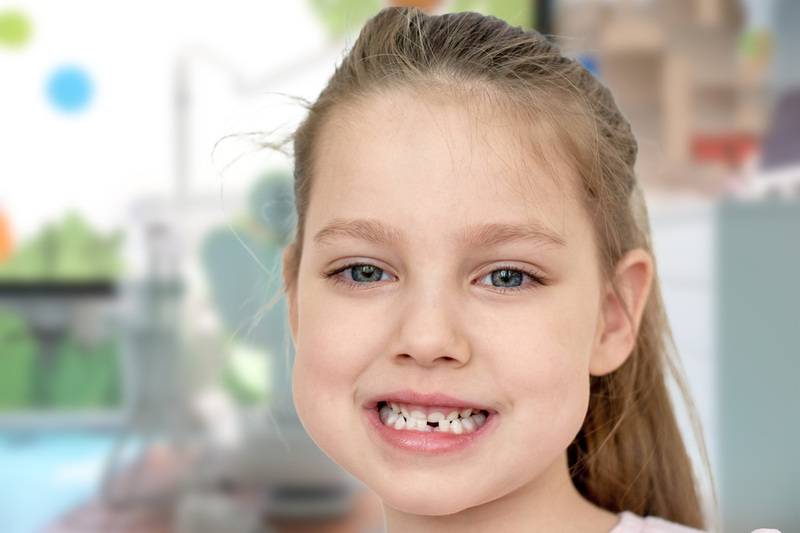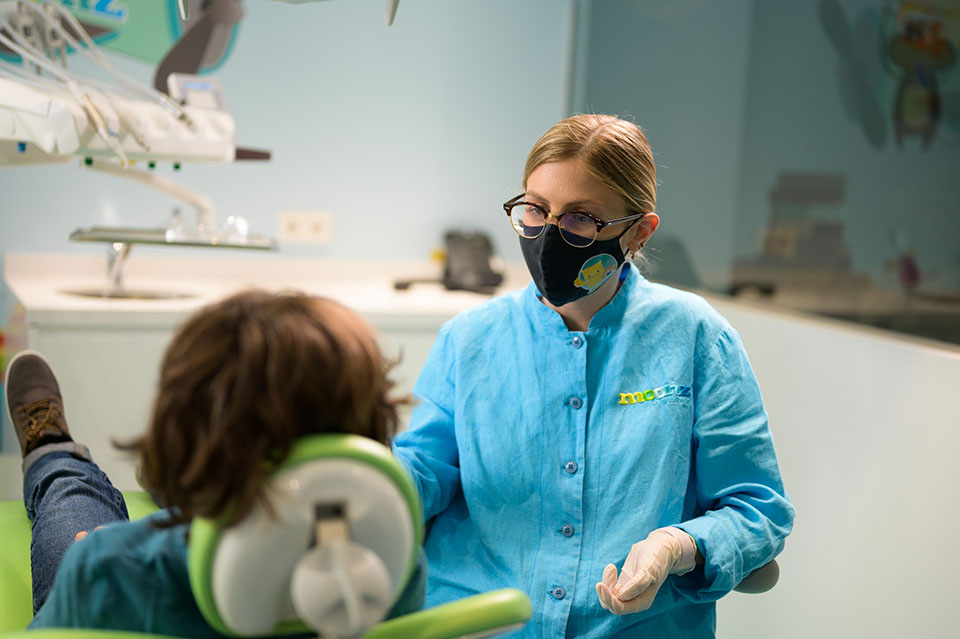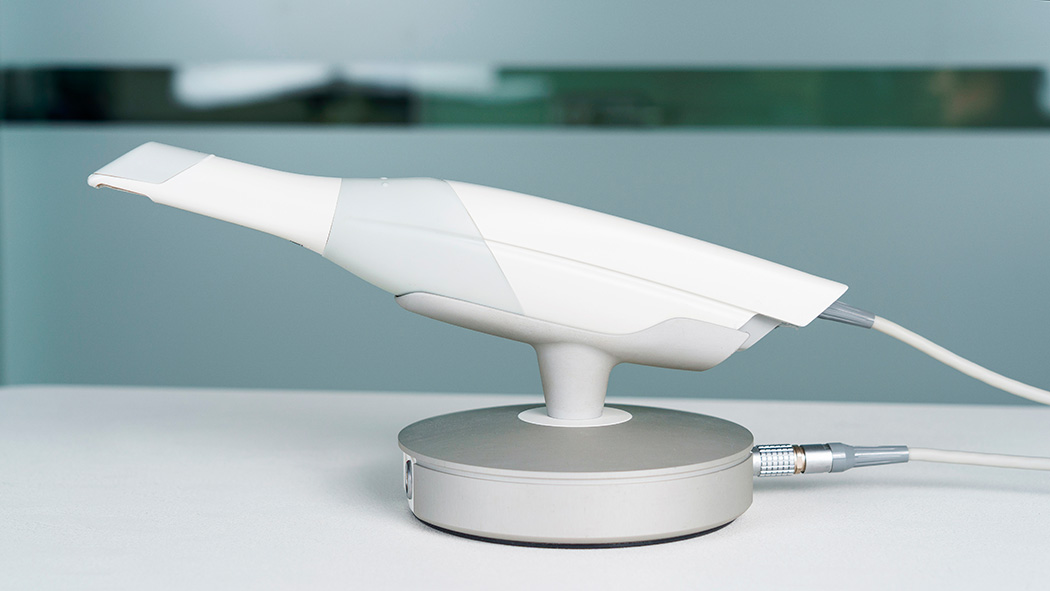A space maintainer is used when a milky tooth has exfoliated before its time. Children may experience an early tooth loss for various reasons, the most prevalent ones are due to cavities and to dental trauma. In these cases, it is important to prevent the adjacent teeth from invading the empty space that the exfoliated milky tooth has left in the mouth.
That scenario is accomplished by positioning a space maintainer. If the conservation of that space is not properly managed and the gap starts to close, the probability for the adjacent teeth to invade it and consequently, prevent the eruption of the permanent tooth underneath it, becomes highly probable and risky.
For this reason, the use of a space maintainer is usually recommended.
Additionally, it will help in guiding the growth and direction of the permanent tooth. In the following article, we will explain what is a space maintainer, the different types and some tips on how to clean it correctly.
What is a space maintainer?
The space maintainer is a metal appliance, custom-made for each child, which is placed on one of the teeth adjacent to the milky tooth that has been lost prematurely. Its main objective is to keep or maintain the space from which the piece has fallen so that the permanent tooth can erupt in its corresponding position.
Why can milky teeth fall out prematurely?
The most common causes for which a temporary dental piece can fall out prematurely are:
- Dental trauma: Children are often prone to falls and bumps, which can sometimes affect the soft part of the mouth or dental tissue and in some cases, the dental pulp.
- Dental caries: If it is in an advanced state and it is not treated in time, it can damage the tooth irreversibly. This entails performing a pulpectomy, pulpotomy, or even an
extraction, depending on the severity. - Lack of space in the arch: If we have an osseo-dental discrepancy, meaning there is less bone for the teeth the child has, it could cause a lack of space in the bone arch,
resulting in a scenario where 1 permanent tooth can exfoliate 2 milky teeth (the one it is supposed to exfoliate and the one next to it, as it needs more room to erupt). - Genetic factors or development problems: can play an important role, since milky teeth are sometimes weaker and fall out prematurely.
- Systemic or periodontal (gum) diseases: as well as the consumption of certain medications can affect oral health.
What is the space maintainer used for?
The space maintainer is used for a variety of reasons in pediatric dentistry, including:
- Preservation of the space of the fallen tooth to prevent the adjacent teeth from moving and occupying the gap, thus leaving room for a correct eruption of the permanent tooth.
- Promotion of correct dental development: The space maintainer is a guide for the growth of the permanent tooth.
- Prevention of other orthodontic problems: Sometimes it may be necessary to go for other more invasive orthodontic treatments (appliances, braces, extraction of a
permanent tooth) to correct moderate – severe cases of dental crowding. - Prevention of dental malocclusion: The premature absence of a milky tooth can affect the bite causing dental malocclusions, including openbites and crossbites which could
easily affect speech and masticatory functions.
What types of space maintainers are there?
There are two types of space maintainers: fixed and removables. The orthodontist will recommend the use of one or the other according to the needs of each patient.
The fixed space maintainer:
It is a metal appliance that is placed on one or more teeth adjacent to the gap left by the milky tooth.
Depending on the anchoring and separation system, we can distinguish the following types of fixed maintainers:
- Wide band or crown: Consists of a metallic band which is a ring that is placed as a cover on the tooth adjacent to the space. This band is attached to a wire that exerts
pressure on the tooth which is before the missing one, thus seeking to preserve space. This appliance is used when the permanent molar has erupted. - Transpalatal bar: It is a thin metallic bar which is designed only for the upper arch, since it is a transversal bar that connects the two bands placed on 2 teeth (one on each side of the mouth, R side and L side), shaped according to the curvature of the palate to make it less uncomfortable.
- Lingual or transpalatal arch: It is a device made for the lower arch. It consists of two bands or rings (covering the permanent first molars, one in each side of the mouth)
linked by a thin steel arch, adjusted to the internal faces of the teeth to make it less uncomfortable. - Nance button: This appliance is made from an acrylic resin button that rests on the palatal ridges (the ridges of the palate in the upper jaw), welded to a metal band on the
upper or posterior first molars. It is used when any of the posterior teeth have been lost prematurely.
Removable space maintainer
This type of device is made of resin and metal material. It consists of an acrylic palate which covers the palate until it touches the inner part of the upper teeth and holds it in that position with metal hooks.
The removable maintainer is usually less effective than the fixed maintainer as the fixed maintainer is in the mouth 24 hours a day.
How to clean a space maintainer?
It is important to carry out good oral hygiene to keep the space maintainer in good condition and ensure its proper functioning. More importantly, if the oral hygiene is deficient, the teeth covered by the appliance will be affected.
The cleaning of the space maintainer varies according to the type:
- Fixed space maintainer: A correct daily hygiene is important, therefore, since food remains can accumulate in the appliance, the child must follow a good oral hygiene,
brushing the teeth ideally after each meal. - Removable space maintainer: it is easier to clean, since it is removable. The child must take it off to eat and store it in its corresponding box, so as not to lose it or break it.
To clean it correctly, it is necessary to wash it with lukewarm water and a soft toothbrush or denture brush with neutral soap. Do not use hot water, as the appliance could be
deformed.
It is important to go to the dentist for regular reviews. The professional will do a complete follow-up of the case, by checking periodically the condition of the space maintainer and the status of the permanent tooth eruption.





























